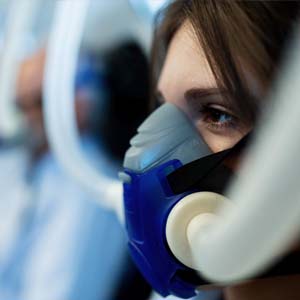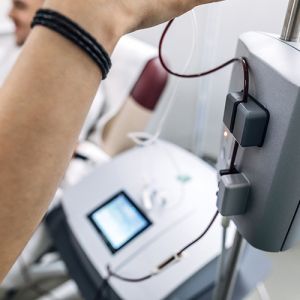Heart Disease
Heart Disease
Conditions that restrict or block blood arteries are referred to as heart disease (coronary heart disease). This can result in a heart attack, angina, or stroke in some cases. Heart disease can also includes disorders that damage the muscle and valves of your heart, as well as causing irregular heart rhythms (arrhythmias).
Understanding Heart Disease
Heart and circulation disorders account for a quarter of all deaths in the UK, or over 160,000 each year, an average of 460 deaths per day, or once every three minutes. In the United Kingdom, around 7.6 million people suffer from heart or circulatory disease, with 4 million males and 3.6 million women.
Heart disease knows no bounds. It is the leading cause of death for a variety of individuals, including whites, Hispanics, and Black and the number is rising.
While heart disease can be fatal, it is also avoidable in the majority of cases. Adopting healthy life choices as early as possible will help you live longer and maintaina healthier heart.
What are the many
types of heart disease?
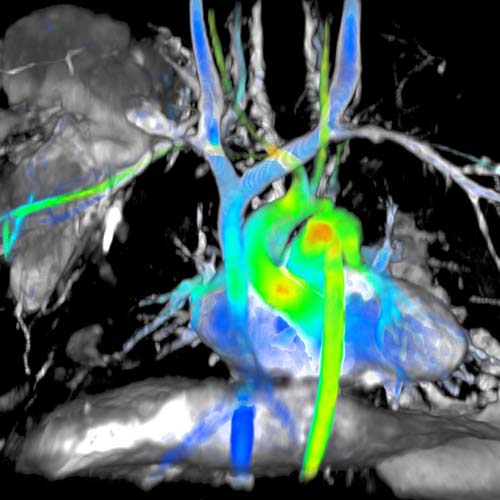
What are the many types of heart disease?
Heart disease is a term that refers to a variety of cardiovascular issues. Heart disease encompasses a wide range of ailments and diseases. The following are examples of different types of cardiac disease:
- Atherosclerosis. This is the hardening of the arteries, the technical term is known as atherosclerosis.
- Arrhythmia. A heart rhythm anomaly is known as an arrhythmia.
- Cardiomyopathy. The weakening or hardening of the cardiac muscles is a result of this disorder.
- Congenital heart defects. Congenital heart defects are heart abnormalities that are present from birth.
- Coronary artery disease (CAD). A condition that affects (CAD). A buildup of plaque in the arteries of the heart causes CAD. Ischemic heart disease is another name for it.
- Infections of the heart. Parasites, bacteria, and viruses, can all contribute to heart infections.
What are the signs and
symptoms of Heart disease?

What are the signs and symptoms of Heart disease?
Different types of heart disease can cause a wide range of symptoms.
Arrhythmias
Arrhythmias are irregular heartbeats. The symptoms you encounter may vary depending on the type of arrhythmia you have – fast or slow heartbeats. An arrhythmia can cause the following symptoms:
- Light-headedness
- A rapid heartbeat or a fluttering heart
- A slow heartbeat
- Episodes of fainting
- Dizziness
- Chest discomfort
Atherosclerosis
The blood supply to your extremities can be reduced as a result of atherosclerosis. Atherosclerosis symptoms can include shortness of breath, and chest pains, as well as:
- A feeling of coldness, particularly in the limbs
- Numbness in the limbs, especially
- Pain that is unique or unexplainable
- An absence of strength in your legs and arms
Congenital heart defects
Heart abnormalities that are present at birth that arise while a foetus is growing are known as congenital heart defects. Some cardiac problems go undetected for years. Whilst others can be discovered as a result of symptoms that the patient is experiencing, such as:
- Skin with a blue tinge
- Oedema in the extremities
- Breathing problems or shortness of breath
- Weariness and exhaustion
- Heartbeats that are irregular
Coronary artery disease (CAD)
(CAD) – Coronary artery disease is the plaque buildup that collects in the arteries which block the transportation of oxygen-rich blood through the heart and lungs. Symptoms of coronary artery disease include:
- Chest discomfort or pain
- The chest feels squeezed or under pressure
- Shortness of breath
- Nausea
- Feelings of indigestion or gas
Cardiomyopathy
A condition that causes the heart muscles to enlarge and become rigid, thick, or weak is called Cardiomyopathy. These are some of the common signs and symptoms of Cardiomyopathy:
- Fatigue
- Bloating
- Legs that are swollen, especially the ankles and feet
- Breathing problems
- Rapid pulse
Infections of the heart
Two disorders that might be described as heart infections are Endocarditis and myocarditis. A heart infection can cause the following symptoms:
- Chest discomfort
- Coughing or chest congestion
- Fever
- Chills
- Rashes on the skin
Learn more about heart disease symptoms and indicators.
Symptoms of
heart disease in women

Symptoms of heart disease in women
Women and men have different indications and symptoms of heart disease, especially when it comes to coronary artery disease (CAD) and other cardiovascular diseases.
A study that was carried out in 2003 reviewed the symptoms that women had experienced during a heart attack. “Classic” heart attack symptoms including chest pain and tingling were not among them. Women, expressed symptoms such as sleeplessness, worrying, and unexpected and unexplained exhaustion, according to the study.
Furthermore, over 80% of women reviewed in the study said they had experienced similar symptoms for over a month before the heart attack.
Symptoms of heart disease in women can often be confused with those of other illnesses such as menopause, depression, and anxiety.
Symptoms of cardiac disease in women include:
- Dizziness
- Paleness
- Breathing difficulties, such as shallow breathing or shortness of breath
- Light-headedness
- Passing out or fainting
- Anxiety
- Nausea
- Vomiting
- Jaw ache
- Neck ache
- Backache
- Indigestion, bloating, and soreness in the chest and stomach
- Cold sweats
Find out why many women say they wouldn’t phone 999 if they felt they were having a heart attack by reading more about the common signs and symptoms of heart disease in women.
What Causes
Heart Disease?

What Causes
Heart Disease?
A term that refers to a group of diseases and conditions that causes heart issues is known as heart disease. Each kind of cardiac disease is caused by a different characteristic. Plaque buildup in the arteries causes atherosclerosis and coronary artery disease (CAD). Heart disease can also be caused by other factors, which are detailed further below.
Arrhythmia is a malfunctioning heartbeat
An aberrant heartbeat can be caused by a variety of factors, including:
- Diabetes
- CAD
- Congenital heart abnormalities are among the most common types of cardiac defects.
- Natural treatments, vitamins, and pharmaceuticals
- Blood pressure that is too high (hypertension)
- Excessive use of alcohol or caffeine
- Disorders of substance abuse
- Anxiety and stressHarm or sickness to the heart
Causes of congenital heart defects
This type of cardiac disease develops when a baby is still in the womb. Some cardiac deficiencies are significant and should be located and treated as soon as viable. Some people may be undiagnosed for years.
The anatomy of your heart changes as you get older. This can result in a cardiac defect, which can cause additional issues.
Cardiomyopathy is a condition that affects the heart
Cardiomyopathy comes in a variety of forms. Each type is the outcome of its own set of circumstances.
- The condition in which the heart is dilated is known as Dilated cardiomyopathy. The reason for this most prevalent type of cardiomyopathy, which results in a weaker heart, is unknown. It could be due to earlier cardiac damage, such as that caused by medicines, infections, or a heart attack. It could also be the result of uncontrolled blood pressure or an inherited disorder.
- Cardiomyopathy with hypertrophy. This type of cardiac disease causes the heart muscle to thicken. It’s frequently passed down the generations.
- Cardiomyopathy with constriction. The cause of this kind of cardiomyopathy, which results in hard heart walls, is frequently unknown. Scar tissue buildup and amyloidosis, a form of aberrant protein buildup, are two possible causes.
Causes of Heart Infection
The prevalent cause of cardiac infection include viruses, bacteria, and parasites. If not treated properly, uncontrolled infections in the body can affect the heart.
How is
Heart Disease
diagnosed?
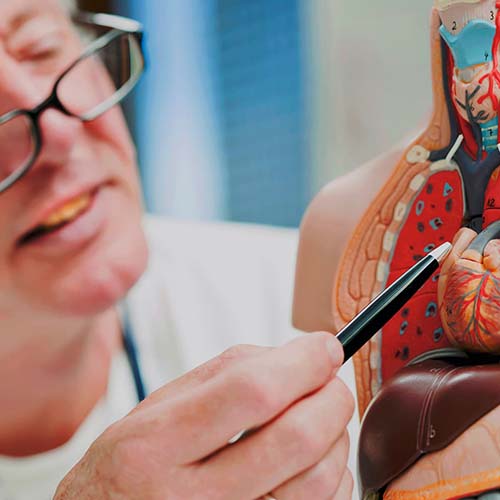
How is Heart Disease diagnosed?
Your doctor will perform a variety of tests and examinations to diagnose heart disease, your doctor may perform a variety of tests and exams. These tests can be carried out before any symptoms of heart disease appear. Others may be used to investigate potential reasons for symptoms as they arise.
Physical examinations and blood testing are required.
The doctor will start by conducting a physical examination and taking a thorough account of your symptoms. Then they’ll want to discuss your medical history and any of your immediate family if you have a close relative who has heart disease. In some heart conditions, family history and genetics can play a role.
Blood tests are commonly requested. This is owed to the fact that they can aid your doctor in determining your cholesterol levels and identifying indicators of inflammation.
Non-invasive examinations
Diagnosing Heart disease can be accomplished using a variety of non-invasive diagnostics.
- An EKG or sometimes referred to as an ECG is a type of electrocardiogram. An EKG test tracks the electrical activity of your heart and alerts your doctor to any abnormalities.
- Echocardiogram. This ultrasound exam can provide your GP with a detailed view of the structure of your heart.
- A stress test was conducted. This exam is carried out while you are exerting yourself which could be carried out by like walking, running, or riding a stationary bike. Your doctor monitors your heart’s activity in response to the variations in the physical exertion you experience during the test.
- Ultrasound of the carotid arteries. Your GP may prescribe this ultrasound test to get a comprehensive image of your carotid arteries.
- A Holter monitor a device used by your doctor to record your heartbeat. Your doctor may ask you to wear a heart rate monitor for a period of 24 to 48 hours. This will enable your doctor to gain a better picture of your heart’s activities.
- Tilt table test. Your GP may recommend this test if you’ve recently fainted or felt lightheaded upon standing up or sitting down. You will be secured to a table and carefully elevated or lowered whilst your doctor monitors your heart rate, blood pressure, and oxygen levels.
- CT scan. This procedure provides your doctor with highly detailed X-ray imagery of your heart.
- MRI of the heart. Like a CT scan, a heart MRI can produce detailed images of your blood vessels and your heart.
Invasive examinations
If a physical exam, blood tests, and noninvasive testing don’t reveal any abnormalities, your doctor may want to explore surgery and take a look inside your body to see what’s causing any of your strange symptoms. The following are examples of invasive tests:
- Coronary angiography and cardiac catheterization. A catheter may be inserted into your heart through the groyne and arteries by your doctor. The doctor will use the catheter to carry out the test on the heart and arteries. Your doctor can carry out a coronary angiography once the catheter is fitted into your heart. During coronary angiography, a dye is injected into the delicate arteries and capillaries around your heart. The dye assists your doctor in creating a highly detailed X-ray.
- An investigation into electrophysiology. Your doctor may install a catheter to connect electrodes to your heart for this procedure. Your doctor will be able to transmit electric pulses through the electrodes and monitor how the heart responds once the electrodes are in place.
Learn more about the diagnostic tests used to detect heart disease.
What are some heart disease risks & preventive factors?

What are some heart disease risks & preventive factors?
Maintaining your blood pressure and cholesterol levels is among the first steps toward a healthier heart. In millimetres of mercury, blood pressure is calculated (mm Hg). Healthy blood pressure is defined as being less than 120 systolic and 80 diastolic, and is commonly expressed as “120 over 80” or “120/80 mm Hg.” Systolic pressure refers to the measurement taken during a heartbeat. Your physician will measure your diastolic pressure while your heart is at rest. Higher numbers suggest that the heart is beating too vigorously.
Your risk factors and your family’s history of heart disease influence your ideal cholesterol level. Your goal levels will be lower than those of someone with a low or moderate risk of heart disease if you are diabetic, have a history of heart disease, or are at higher risk of developing these diseases.
Look for stress-relieving techniques
As simple as it sounds, stress management can help reduce your risk of heart disease. Don’t discount the function of persistent stress in heart disease. If you’re constantly overwhelmed, nervous, or dealing with stressful life events like moving, changing jobs, or going through a divorce, talk to your doctor.
Consume a nutritious, well-balanced diet
A low-fat, high-fibre diet with plenty of fresh fruits and vegetables (5 pieces per day) and whole grains is recommended.
You should consume less than 6g (0.2oz) of salt each day, too much salt will increase your blood pressure. 1 tablespoon of salt equals 6 grammes.
Saturated and unsaturated fats are the two forms of fat. Foods high in saturated fats should be avoided because they raise the amount of harmful cholesterol in your blood.
Saturated fat-rich foods include:
- Pies made with meat
- Sausages and fatty meat slices
- Butter
- Ghee is a form of butter that is commonly used in Indian cuisine.
- Lard
- Cream
- Hard cheese
- Biscuits and cakes
- Coconut or palm oil-containing meals
Unsaturated fats, on the other hand, have been demonstrated to boost levels of good cholesterol and aid in the reduction of artery blockage in a balanced diet.
You can lower your chance of developing coronary heart disease by lowering your blood pressure and cholesterol levels (CHD).
Consume a nutritious, well-balanced diet
A low-fat, high-fibre diet with plenty of fresh fruits and vegetables (5 pieces per day) and whole grains is recommended.
In order to prevent your blood pressure from rising, you should limit your daily salt intake to 6g (0.2oz). Salt weighs 6 grammes per tablespoon.
Two types of fat exist: saturated and unsaturated. Considering that they increase the level of dangerous cholesterol in your blood, saturated fat-rich foods should be avoided.
Unsaturated fat-rich foods include:
- Fatty fish
- Avocados
- Seeds and nuts
- Sunflower, rapeseed, olive, and vegetable oils are some of the most common.
Also, avoid overconsuming sugar in your diet since this could increase your risk of developing diabetes, diabetes has been linked to an increased risk of CHD.
Find out more about:
- A balanced diet
- Reducing saturated fat intake
- Sugar-related facts
Increase your physical activity
The best method to maintain a healthy weight is to combine a nutritious diet with frequent exercise. High blood pressure is less likely if you maintain a healthy weight.
Regular exercise will improve the efficiency of your heart and circulatory system, lower your cholesterol, and keep your blood pressure at a healthy level.
Regular exercise lowers your chances of having a heart attack. Like any other muscle, the heart is a muscle and can benefit from exercise. A strong heart can circulate more blood through your body with little effort.
Aerobic workouts like walking, swimming, and dancing force your heart to work harder and keep it in good condition.
You may read more about fitness and exercise here.
Maintain a healthy weight
Your optimal weight in relation to your height and build can be determined by a GP or practise nurse. Alternatively, use our BMI calculator to determine your body mass index (BMI).
Learn more about how to lose weight.
Stop Smoking
Quitting smoking will reduce your risk of developing heart disease.
Smoking is a significant risk factor for atherosclerosis (furring of the arteries). In those under the age of 50, it also causes the majority of occurrences of coronary thrombosis.
The odds of successfully stopping smoking are increased by up to three times when stop-smoking support is combined with medications like patches or gum.
Consult your doctor or find out more about quitting smoking here.
Reduce your alcohol consumption
If you drink, don’t consume more than the maximum amount recommended.
It is advised to spread out your drinking over three days or more if you consume more than 14 units per week.
Since binge drinking increases the risk of a heart attack, it should be avoided at all costs.
Learn more about alcohol and drinking.
Maintain a healthy blood pressure level
Blood pressure can be controlled by eating a healthy, low-saturated-fat diet, exercising regularly, and, if necessary, using blood pressure medication.
Blood pressure should be less than 140/90mmHg. If you have high blood pressure, ask your doctor to check it on a regular basis.
Find out more about hypertension.
Keep your diabetes in check
If you have diabetes, you’re more likely to get CHD. Controlling your weight and blood pressure, as well as being physically active, will help you regulate your blood sugar levels.
If you have diabetes, you should keep your blood pressure below 130/80mmHg.
More information on diabetes can be found here.
Take any prescription medication as directed
If you have CHD, you may be given medication to assist alleviate your symptoms and preventing further complications.
Your doctor may prescribe medicine to protect you from developing heart-related problems if you do not have CHD but have high cholesterol, high blood pressure, or a family history of heart disease.
If you’ve been prescribed medication, it’s critical that you take it and follow the instructions exactly. Stopping your medicine without first visiting a doctor is likely to make your symptoms worse and put your health in jeopardy.
You have no influence over the risk variables
Other heart disease risk factors include:
- Family history
- Ethnicity
- Sex
- Age
Although you can’t control these risk factors, you can keep track of their effects. If there is a family history of CAD, it is especially concerning if:
- A male relative, such as a father or brother, who is under 55 years old
- A female relative, such as a mother or sister, who is under the age of 65
What is the treatment
options for heart disease?
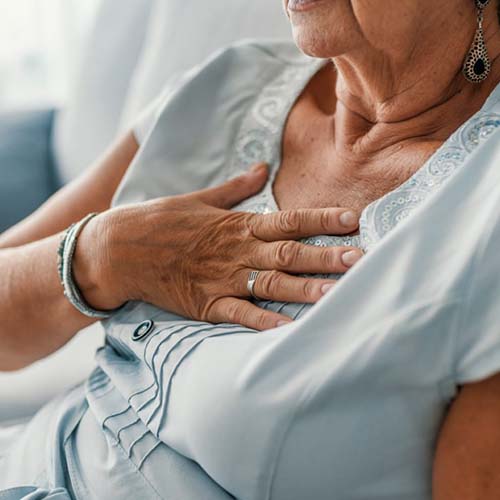
What is the treatment options for heart disease?
The type of cardiac disease and how far it has advanced dictate treatment options in major part. For instance, if you have a heart infection, your doctor may probably recommend antibiotics.
They might use a two-pronged approach if you have plaque buildup: they might prescribe a medication to help lower your chance of developing more plaque; they might also collaborate with you to make healthy lifestyle changes.
Heart disease can be treated in three different ways:
Lifestyle changes
A healthy lifestyle can help prevent heart disease. They can also help you treat the issue and stop it from getting worse. Your nutrition may be one of the first areas you wish to address.
Consume a low-sodium, low-fat diet that is high in fruits and vegetables to lower your risk of heart disease complications. One illustration is the DASH (Dietary Approaches to Stop Hypertension) diet.
Similar to regular exercise, quitting smoking can help manage heart disease. Also, cut back on your alcohol intake.
Medications
For some heart disorders, medication use may be necessary. To treat or manage your cardiac issue, your doctor can recommend a medication. The possibility of complications can be decreased or completely eliminated by using medications. The type of cardiac disease you have will affect the medication that is prescribed for you. Learn more about the drugs that might be used to treat heart disease.
Surgery or invasive procedures
Some types of heart disease may require surgery or a medical procedure to address the condition and stop the symptoms from getting worse.
For example, if plaque buildup has totally or nearly completely clogged your arteries, your doctor may place a stent in the artery to restore normal blood flow. Your doctor’s procedure will be determined by the type of heart disease you have and the level of heart damage.
Alternative and Complementary therapies used
when treating Heart Disease patients
Hyperbaric oxygen therapy
In Hyperbaric oxygen therapy, patients breathe pure oxygen at high pressures in a specially built chamber. It’s occasionally used as a treatment to try to enhance the supply of oxygen to the injured heart and lessen the portion of the heart that’s at risk of dying 1.
Cryotherapy
Cryotherapy has been proven to be safe and successful in applications such as the treatment of atherosclerotic disease in peripheral arteries (outside of the heart) 2.
Ozone therapy
Ozone therapy is a form of alternative medicine that has been used to cure a variety of ailments, including diabetes and heart failure 3, 4.
Red Light Therapy
In cardiomyocytes and cardiac tissue, Red light therapy greatly boosted ATP levels. These findings suggest that increasing ATP production with LED-Red treatment is critical for improving cardiomyocyte contractile function in the HF heart 5.
Infrared Sauna therapy
In chronic heart failure patients, Infrared sauna therapy is both safe and effective at improving clinical symptoms and cardiac function, as well as shrinking cardiac size. 6, 7.

Hyperbaric oxygen therapy
In Hyperbaric oxygen therapy, patients breathe pure oxygen at high pressures in a specially built chamber. It’s occasionally used as a treatment to try to enhance the supply of oxygen to the injured heart and lessen the portion of the heart that’s at risk of dying 1.
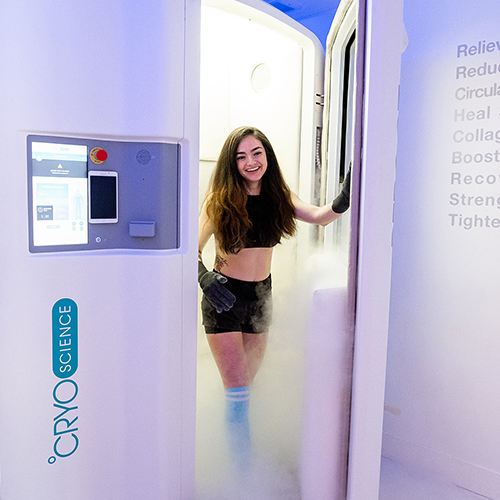
Cryotherapy
Cryotherapy has been proven to be safe and successful in applications such as the treatment of atherosclerotic disease in peripheral arteries (outside of the heart) 2.
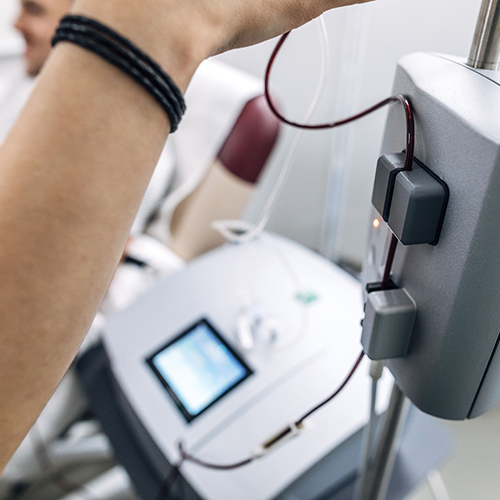
Ozone therapy
Ozone therapy is a form of alternative medicine that has been used to cure a variety of ailments, including diabetes and heart failure 3, 4.

Red Light Therapy
In cardiomyocytes and cardiac tissue, Red light therapy greatly boosted ATP levels. These findings suggest that increasing ATP production with LED-Red treatment is critical for improving cardiomyocyte contractile function in the HF heart 5.

Infrared Sauna therapy
In chronic heart failure patients, Infrared sauna therapy is both safe and effective at improving clinical symptoms and cardiac function, as well as shrinking cardiac size. 6, 7.
What’s the link between
heart disease
and Hypertension?
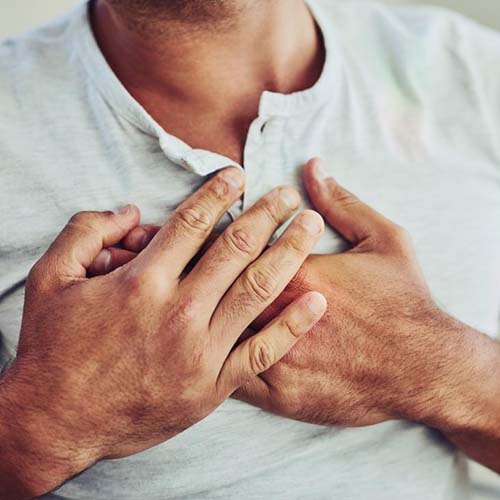
What’s the link between heart disease and Hypertension?
Chronic elevated blood pressure is the cause of hypertensive heart disease. To circulate blood throughout your body, hypertension forces your heart to work harder. This increased pressure can result in a thickened, enlarged heart muscle as well as restricted arteries, which can cause a variety of cardiac problems.
Your heart muscles may get harder and thicker as a result of the greater force required to pump blood. This may have an effect on how well your heart pumps. The arteries might become less elastic and more rigid as a result of hypertensive heart disease. This can cause blood circulation to slow down and prevent your body from receiving the oxygen-rich blood it requires.
Because hypertensive heart disease is the leading cause of death in persons with high blood pressure, it’s critical to start treating it as soon as possible. Treatment can help to prevent further difficulties and damage.
More information on hypertensive heart disease can be found here.
Is there a cure for heart disease?
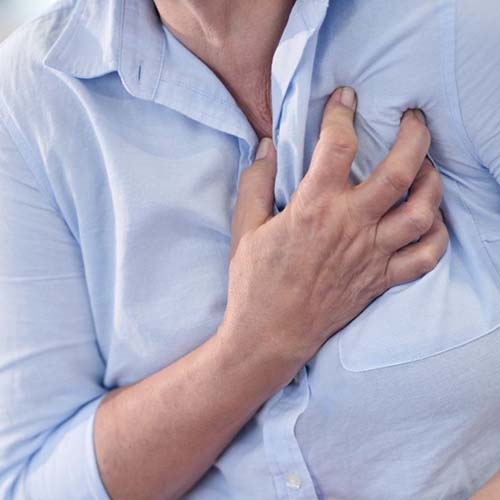
Is there a cure for heart disease?
Heart disease is incurable and irreversible. It necessitates lifelong treatment and close monitoring. Many of the signs and symptoms of heart disease can be treated with drugs, therapies, and lifestyle changes. If these techniques fail, a coronary intervention or bypass surgery may be necessary.
Make an appointment with your GP if you suspect you are experiencing symptoms of heart disease or if you have risk factors for heart disease. Together, you can assess your risks, do a few screening tests, and devise a strategy for remaining healthy.
It’s critical to take care of your general health today, rather than waiting for a diagnosis. This is especially true if you have a family history of heart disease or if you have a condition that puts you at higher risk for heart disease. Taking care of your body and heart now will pay off in the future.


